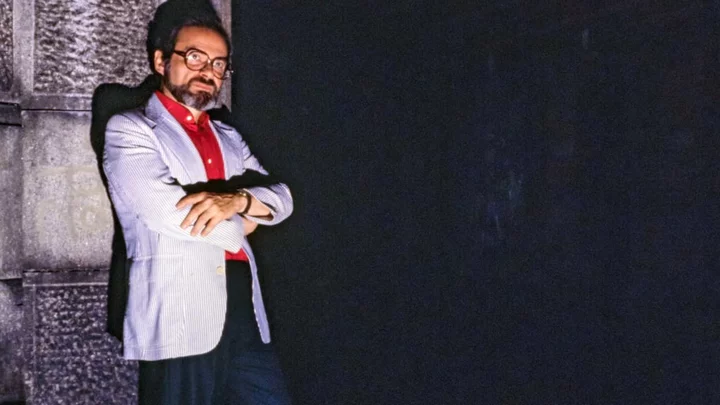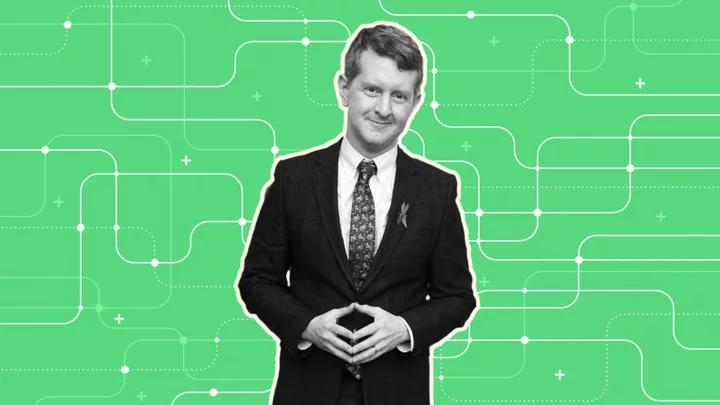Maurice Sendak’s books were shaped by his own childhood: one marked by the Lindbergh baby kidnapping, the concentration camp deaths of most of his extended family, and parents consumed by depression and anger. When Sendak—who was born on June 10, 1928—started illustrating and writing for children, he vowed that he wouldn’t write stories of sunshine and rainbows, because that’s not real life. Here are a few other things about the author’s real life you might not have known.
1. Maurice Sendak designed F.A.O. Schwarz’s window displays.
Maurice Sendak and his brother visited Manhattan’s F.A.O. Schwarz in 1948 to try to get the company to purchase their handmade, fairytale-inspired wooden toys. Though the toy store declined to purchase the brothers’ work for reproduction, they were impressed with Sendak’s artistic eye and asked him if he’d be interested in a job dressing windows. He worked at F.A.O. Schwarz for three years while taking classes at the New York Art Students League.
2. Sendak’s original idea for Where the Wild Things Are was Where the Wild Horses Are.
Where the Wild Horses Are was intended, of course, to feature horses. Editor Ursula Nordstrom adored the title, which she thought was poetic and beautiful, but there was one problem: Sendak couldn’t draw the animals. When he told his editor that the whole horse thing wasn’t going to work out, he recalled her “acid tone[d]” response: “Maurice, what can you draw?”
“Things,” he said, and “things” he drew.
Side note: Ursula Nordstrom was also the editor of a few classics like The Giving Tree, Goodnight Moon, Harold and the Purple Crayon, and Charlotte’s Web, among others. Not a bad resume.
3. The “things” Sendak ended up creating were inspired by his immigrant relatives and the way he viewed them as a child.
“They were unkempt; their teeth were horrifying. Hair unraveling out of their noses.” Though the monsters in Where the Wild Things Are were modeled after Sendak’s family, they weren’t named after them; in fact, the things had no names in the book. They finally received monikers when Wild Things was made into an opera. “We had to have names to tell [the actors] when they were screwing up,” Sendak said in 2009. “They had Jewish names: Moishe, Schmuel. But the names were dropped after the opera. They never had names until they became movie stars.”
4. Most of Sendak’s extended family died in concentration camps.
It wasn’t until he was older that Sendak realized how lucky those immigrant relatives were to be alive—and how lucky he was. Most of his extended family died in concentration camps, which his father discovered the day of Sendak’s bar mitzvah. “My father belonged to a Jewish social club. The day of my bar mitzvah he got word [through the club] that he had no longer a family,” Sendak told The Guardian in 2011. “Everyone was gone. And he laid down in bed. I remember this so vividly. And my mother said to me, ‘Papa can't come.’ And I was having the big party at the colonial club, the old mansion in Brooklyn. And I said, ‘How can Papa not come to my bar mitzvah?’ And I screamed at him, ‘You gotta get up, you gotta get up!’ And of course he did.”
After unknowing guests burst into “For He’s a Jolly Good Fellow” when Mr. Sendak walked through the door, Maurice knew something horrible had happened by his father’s expression. “My father’s face was vivid, livid, and I knew I had done something very bad, that I had made him suffer more than he had to,” Sendak said. “This 13-year-old ersatz man.”
5. Even if Where the Wild Things Are hadn't been such a hit, you probably would have known Sendak’s work anyway.
Prior to the success of his own books, Sendak illustrated the popular Little Bear series by Else Holmelund Minarik.
6. Sendak’s 1970 book In the Night Kitchen is frequently banned.
Though many parents and libraries initially protested that Where the Wild Things Are was too scary for children, it was his later book, In the Night Kitchen, that landed on the American Library Association’s frequently challenged and banned books list. It features a little boy named Mickey, who is nude throughout most of the story, likely because he’s dreaming.
“Have you never had a dream, yourself, where you were totally naked?” Sendak said, when Stephen Colbert asked him about the nudity. (Colbert: “No.” Sendak: “I think you’re a man of little imagination.”) Because of Mickey’s full frontal and some of his nude antics in the book (he jumps into a milk bottle, for instance, and later slides down it), critics have deemed it inappropriate for children. It was No. 24 on the ALA’s frequently banned books from 2000–2009.
7. Sendak was deeply affected by the Lindbergh baby kidnapping.
Sendak believed that the kidnapping of aviator Charles Lindbergh’s young son very much affected his childhood, his work, and his views on life in general. Though he was only 3 years old when the tragedy occurred in 1932, he says he vividly remembers the whole thing, including hearing Mrs. Lindbergh’s tearful voice pleading with the kidnappers via radio to rub camphor on her infant’s chest because she didn’t want his cold to get worse. “Because if that baby died, I had no chance,” Sendak said. “I was only a poor kid, OK? [When the Lindbergh baby was found dead,] I think something really fundamental died in me.” In 2008, he swapped one of his drawings for a miniature souvenir reproduction of the ladder used by the convicted kidnapper and murderer, Bruno Hauptmann, that had been made sold his trial. “That ends my obsession with the case,” Sendak told The New York Times.
8. He hated ebooks.
To say that Sendak disliked eBooks is an understatement: “F*** them is what I say; I hate those e-books. They cannot be the future ... they may well be. I will be dead, I won’t give a s***!”
9. Sendak never came out to his parents.
Sendak never told his parents that he was gay. “All I wanted was to be straight so my parents could be happy,” he told The New York Times in 2008. “They never, never, never knew.” Eugene Glynn, Sendak's partner of 50 years, passed away in 2007; Sendak himself died in 2012 at the age of 83 due to complications from a stroke.
A version of this story ran in 2011; it has been updated for 2023.
This article was originally published on www.mentalfloss.com as 9 Fascinating Facts About Maurice Sendak.









